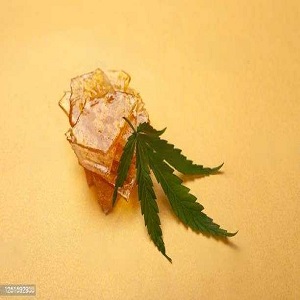As the cannabis industry continues to evolve, so do the methods of consumption and the variety of products available. Among the most popular options are cannabis concentrates, which offer a potent and efficient way to experience the effects of the plant. Two such concentrates that have gained prominence are hash and shatter. In this comprehensive comparison, we’ll delve into the characteristics, production methods, effects, and potential benefits of each, helping you make an informed decision based on your preferences and needs.
Hash: A Time-Honored Tradition
Hash, short for hashish, has a rich history that dates back centuries. It is one of the oldest and most traditional forms of cannabis concentrate, originating from regions like Asia, the Middle East, and North Africa. Hash is typically created by extracting resin from cannabis flowers and compressing it into a solid, concentrated form.
Production Process: The production of hash involves separating the trichomes, the resinous glands containing cannabinoids and terpenes, from the plant material. This is usually done through methods like hand-rubbing, dry sifting, or using specialized screens. Once the trichomes are collected, they are pressed together to form a cohesive mass. This process can result in various textures and qualities of hash, from sticky and pliable to hard and brittle.
Characteristics: Hash comes in a range of colors, from light tan to deep brown, and its texture can be anywhere from soft and malleable to firm and brittle. The aroma and flavor profiles of hash can vary widely depending on the strain used and the production method employed.
Effects and Consumption: Hash is known for its strong effects due to its high concentration of cannabinoids and terpenes. The experience can vary from strain to strain, but hash is generally known for delivering a potent, full-bodied high that can be more sedative and relaxing. It can be consumed in various ways, including smoking, vaporizing, or adding it to other cannabis products.
Shatter: The Glassy Concentrate
Shatter is a more recent addition to the cannabis concentrate landscape and is recognized for its unique glass-like texture. It is known for its high potency and has gained popularity among both medical and recreational users.
Production Process: Shatter is typically produced using solvents like butane or CO2 to extract cannabinoids and terpenes from cannabis plant material. The extracted material is then purged of solvents, resulting in a concentrated, translucent substance with a brittle consistency. The name “shatter” comes from the fact that the concentrate can break easily into thin, glass-like pieces.
Characteristics: Shatter is prized for its clarity and purity. It is usually amber or golden in color and has a smooth, glassy appearance. Its high cannabinoid content contributes to its potency, and its terpene profile can offer a rich and flavorful experience.
Effects and Consumption: Shatter is known for delivering a potent and quick-acting high due to its high cannabinoid concentration. Its effects can be euphoric, uplifting, and energizing. Shatter is commonly vaporized using specialized dab rigs, vaporizers, or electronic dab pens. This method of consumption ensures efficient vaporization of the concentrate, allowing users to experience its effects rapidly.
Comparing Hash and Shatter:
- Texture and Appearance:
- Hash: Varied textures, ranging from soft and sticky to hard and brittle. Colors can span from light tan to dark brown.
- Shatter: Glassy, translucent appearance that can easily shatter into thin pieces. Typically amber or golden in color.
- Production Method:
- Hash: Traditional methods involve hand-rubbing or mechanical separation to collect trichomes.
- Shatter: Extracted using solvents like butane or CO2, followed by solvent purging to create a concentrated substance.
- Potency and Effects:
- Hash: Generally delivers a more relaxing and sedative high due to the presence of a wide range of cannabinoids and terpenes.
- Shatter: Known for its potent and fast-acting effects, often providing an energizing and euphoric experience.
- Consumption:
- Hash: Can be smoked, vaporized, or added to other cannabis products.
- Shatter: Typically vaporized using dab rigs or vaporizers designed for concentrates.
Conclusion
Both hash and shatter offer unique experiences and advantages within the realm of cannabis concentrates. Hash brings with it a sense of tradition and a diverse array of textures, while shatter provides a modern, glassy appeal with potent and rapid effects. Your choice between the two will depend on your preferences, desired effects, and preferred consumption methods. As always, when exploring cannabis concentrates, it’s important to start with a small amount and gauge your tolerance before fully immersing yourself in their potent effects.

